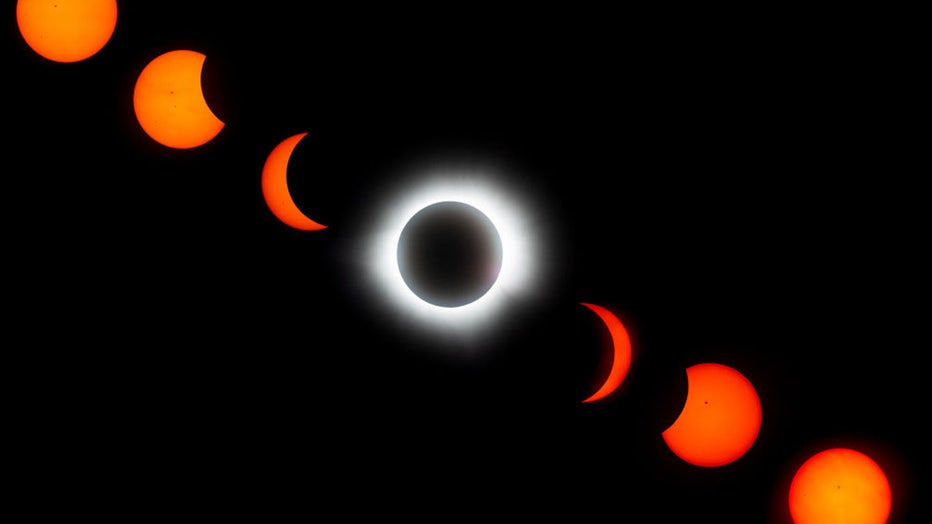How to see rare blood moon: Total lunar eclipse on March 13-14
SEATTLE - We are on the cusp of another lunar eclipse. We look at how to see it and why it is happening.
The total lunar eclipse will be on the night of Mar. 13 into the early morning hours of Mar. 14. The last time we had an eclipse like this was in 2022.
When can you see the lunar eclipse in Washington?
Timeline:
At around 9 p.m. on Mar. 13, the moon will begin to dim as it enters the Earth's penumbra. An hour later, you will start to see what looks like a bite was taken out of the moon.
Totality will not begin until around 11:30 p.m., this is when the color change will go fully into effect, making it appear a coppery-red tone.
Just past 12:30 a.m. on Mar. 14, the moon will exit the umbra and the "bite" out of the moon will be on the opposite side.
How to best view the lunar eclipse?
This event will be visible to the naked eye. However, NASA suggests moving away to a darker area, with better viewing the further you are from city lights. Also, telescopes greatly enhance your chances of observing individual phases more clearly.
If you want to photograph the total lunar eclipse, you would need to have your phone or camera somewhere stable, like on a tripod, with the exposure setting up to several seconds.

The Great North American Eclipse is seen using seven interval timer photos to show the full evolution of eclipse on April 08, 2024 in Mazatlan, Mexico. (Hector Vivas/Getty Images)
Why does the moon turn red during lunar eclipses?
Dig deeper:
During a lunar eclipse, the Earth stands between the moon and sun. This changes how light hits the moon and how we see if down on the ground.
The phenomenon is commonly explained as thinking of the different kinds of light you see in a typical day. Light from the sun turns the sky blue during the day as it is head on. This is because blue light scatters across the wide sky.
In the evening, you see warmer toned sunsets because you are getting sun from around the edges of Earth as it spins around the other side into nightfall.
During total lunar eclipses, light scatters around the edges of the Earth much like a sunset would. So the light we see projected on the moon will have those same warmer qualities.
The Source: Information for this article comes from NASA.
MORE HEADLINES FROM FOX 13 SEATTLE
Gov. Ferguson details $4 billion in spending cuts to address WA deficit
Parents petition to remove WA substitute principal after past admissions of drug use
‘Oops I did a crime’: WA high school teacher charged with child porn
First WA measles case of 2025 confirmed in King County infant
4.5 magnitude earthquake hits near Friday Harbor
To get the best local news, weather and sports in Seattle for free, sign up for the daily FOX Seattle Newsletter.
Download the free FOX LOCAL app for mobile in the Apple App Store or Google Play Store for live Seattle news, top stories, weather updates and more local and national coverage, plus 24/7 streaming coverage from across the nation.

